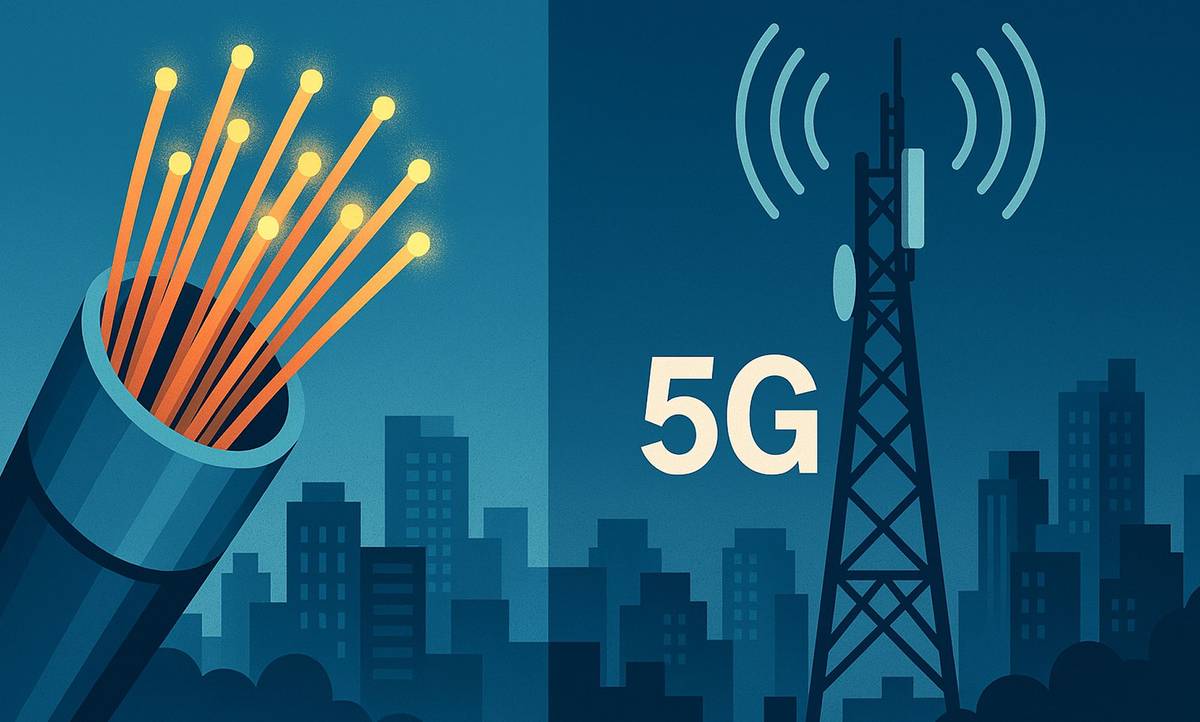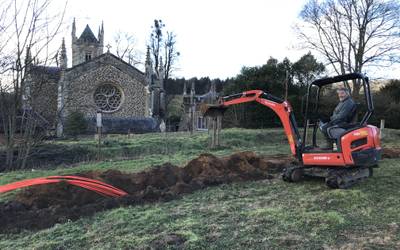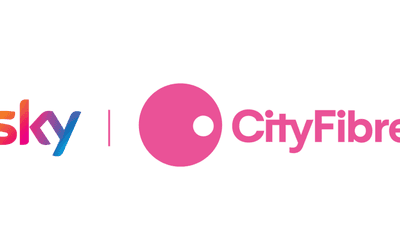What 5G wins at
Let’s be fair: 5G mobile broadband is impressive. When conditions are right, it can outpace many fibre broadband packages, offering speeds of up to 1Gbps – and sometimes more. It’s also far more convenient in some situations as there is no need to wait for installation or deal with line rental, so it's ideal for people on the move, renters or those in areas where full fibre hasn’t reached yet.
Plus, with mobile broadband routers and unlimited data plans now widely available, using 5G as your main home connection is more easy than ever before.
So why isn’t it replacing fixed-line broadband?
Coverage and consistency still lag behind
Despite all its strengths, 5G still has one major weakness: coverage. Urban areas are well-served, but large parts of the UK – especially rural and semi-rural regions – have patchy or non-existent 5G signals. Even in cities, signal quality can vary between providers, and indoors, speeds can drop significantly depending on the building's structure.
Fixed-line broadband, especially full-fibre (FTTP), delivers reliable, consistent speeds, regardless of where your house is or how thick your walls are.
“Unlimited” doesn’t always mean unlimited
While 5G providers are starting to offer “unlimited” plans, many still come with fair usage policies, traffic shaping during peak times, or reduced speeds after certain thresholds are met. In contrast, most fixed-line broadband deals offer truly unlimited usage without these kinds of restrictions – ideal for households with multiple users streaming, gaming, and working from home all at once.
More risk of disruption
Fibre-optic cables have better protection from uncontrollable environmental factors. They are buried, housed in ducts or routed indoors, limiting the chances of service disruption caused by any bad weather. By contrast, mobile signals can be affected by thunderstorms and high winds.
Capacity and network congestion
Mobile networks are shared infrastructure. At busy times, like rush hour or during big events, 5G speeds can slow down significantly. In contrast, full-fibre broadband delivers a direct, dedicated connection to your home. That means less congestion and more reliable speeds – especially during peak hours.
Symmetrical speeds matter
One of the often-overlooked advantages of full-fibre broadband is symmetrical speeds – that means your upload speed is just as fast as your download speed. This is a game-changer for people who work from home, video conference regularly, upload large files, stream on Twitch or YouTube, or back up data to the cloud.
5G, like most traditional broadband technologies, tends to prioritise download speed, with much slower upload rates. For casual browsing and streaming, that might not be an issue, but for modern households with increasingly two-way digital needs, full-fibre's symmetrical performance offers a real edge.
Future-proofing with fibre
The UK government has ambitious targets for full-fibre rollout, aiming for nationwide coverage. As fibre reaches more homes, its advantages – such as symmetrical speeds, ultra-low latency, and rock-solid reliability – will only become more pronounced.
Meanwhile, 5G still relies on mobile masts and signal strength, which makes it a great alternative or backup option, but not a full replacement for most people.
The final verdict
5G mobile broadband is an exciting technology with a lot of potential. It offers flexibility, mobility and fast speeds that can rival – or even beat – some fixed-line services in the right conditions.
But as it stands today, 5G is not a replacement for fixed-line broadband. For households looking for rock-solid reliability, unlimited usage and consistent performance, a fibre broadband connection still comes out on top.
So while 5G might shake things up, the wires and fibres in the ground aren't going anywhere just yet.



